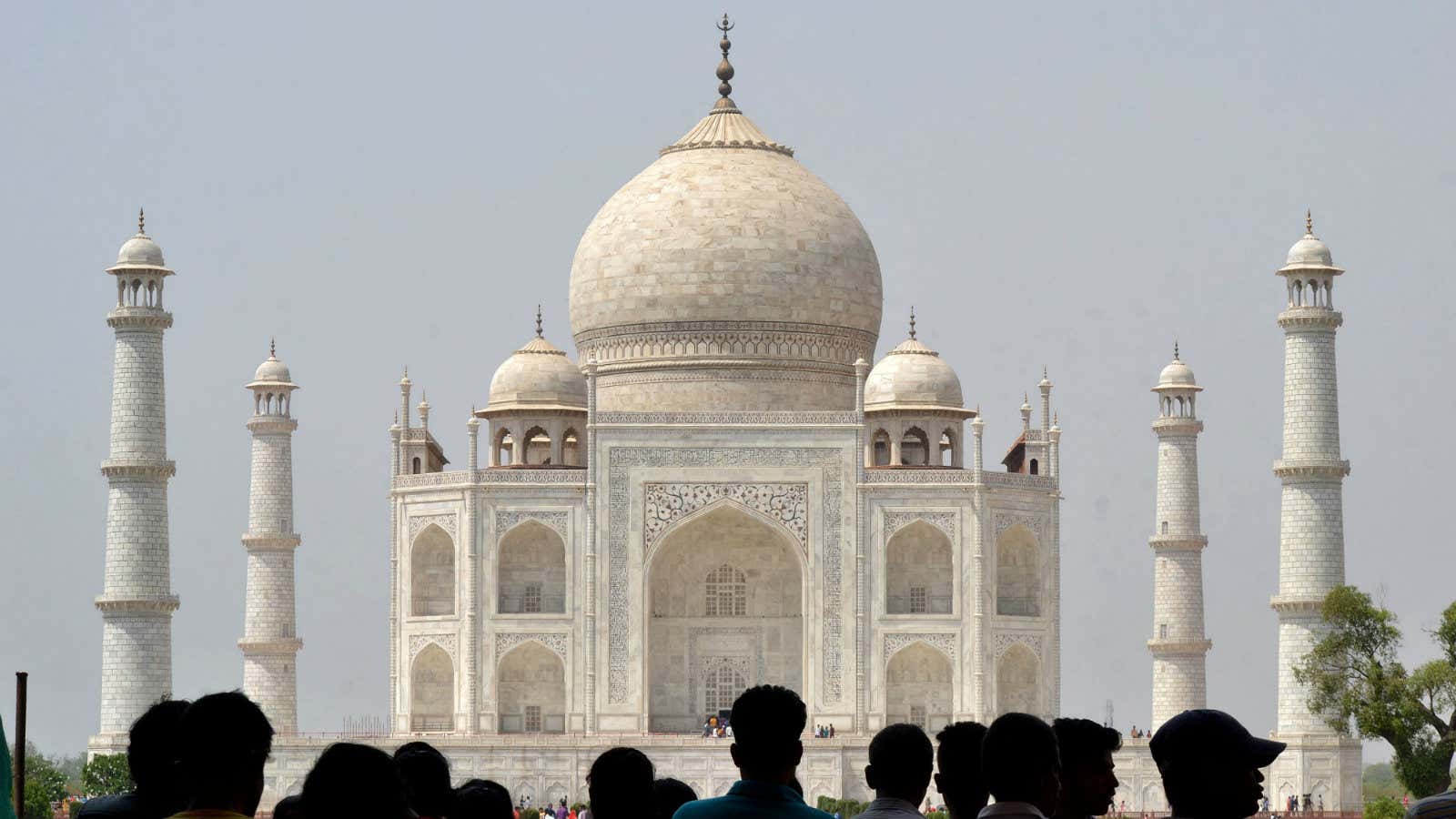The Indian government is out to prove once and for all what colour the iconic Taj Mahal is.
Of late, the government has been facing heavy criticism from the supreme court of India for not doing enough to protect the Mughal-era monument from pollution. On May 01, a bench of the court said that after first turning yellow, the once pristine white marble mausoleum was now becoming green. The Taj, India’s most-visited monument, is located in Agra, a city that was recently ranked the world’s 8th most polluted by the World Health Organization.
In response to the criticism, minister of culture Mahesh Sharma has said the government will embark on a scientific study to establish the monument’s current colour.
“We have original photographs of the monument that are over 100 years old and the same will be compared with pictures taken after cleaning of the monument to measure the changes,” Sharma told the Times of India newspaper on June 03. The process will reportedly involve the technique of stereoscopy which allows viewers to detect minute differences between two images using special glasses or a stereoscope.
The results will be presented to the apex court as a document so “no one can raise questions on the colour of the 17th century mausoleum or claim that it’s turning yellow or brown,” Sharma said.
The battle over the state of the Taj has been going on since the 1980s, when lawyer MC Mehta first filed a petition in the supreme court over the yellowing of the monument’s marble. Since then, the Archaeological Survey of India (ASI), the arm of the ministry of culture responsible for maintaining monuments, has come under fire often for its treatment of the Taj, which has also faced insect infestations and storm damage, besides a nearby garbage crisis. India’s supreme court has been particularly savage in its recent comments, questioning whether the ASI has the expertise to maintain the monument, and whether it cares to do so at all. The court also recommended calling in foreign experts to help.
To address the discolouration on the structure’s main dome and minarets, the ASI has been using mud packs to absorb grease and dirt for several years. But for all the cosmetic corrections, and courtroom conversation, the root causes of the damage remain unaddressed. The burning of trash near the legendary monument, coupled with the fumes from millions of vehicles, have created a toxic atmosphere that leaves carbon residue, dust, and dirt on every surface. Though the supreme court has passed several orders to maintain the area around the Taj as a pollution-free zone, local authorities haven’t done much to enforce proper environment regulations.
So whatever colour pollution turns the Taj Mahal into, rest assured it won’t be pleasing.
